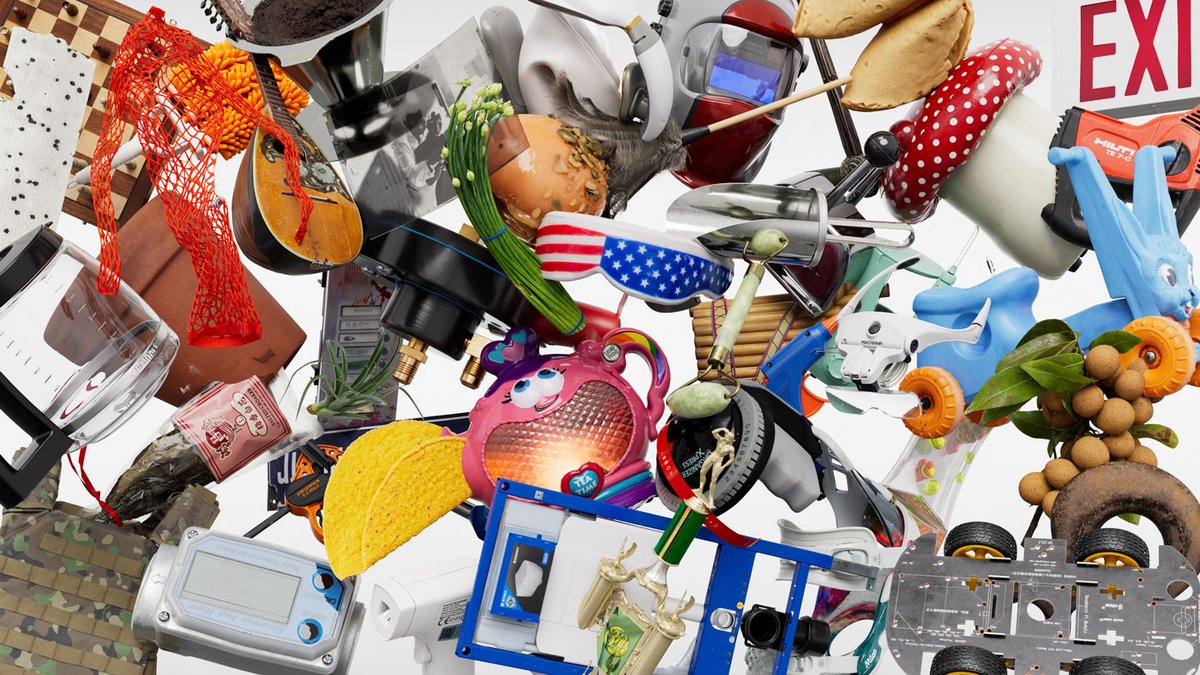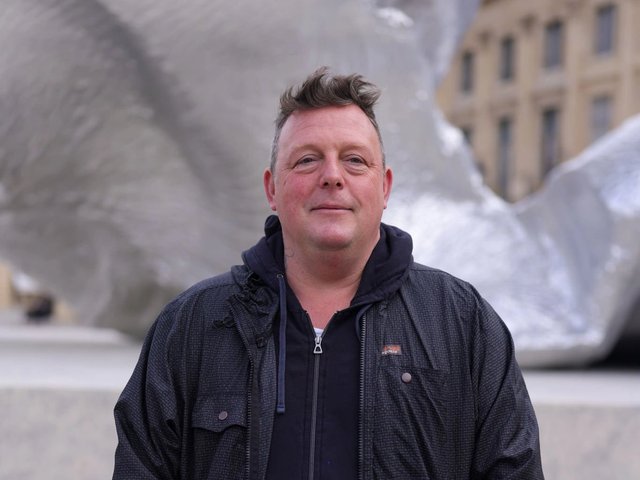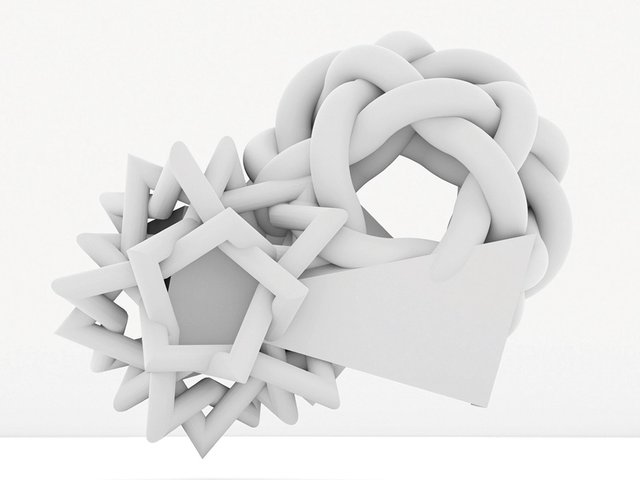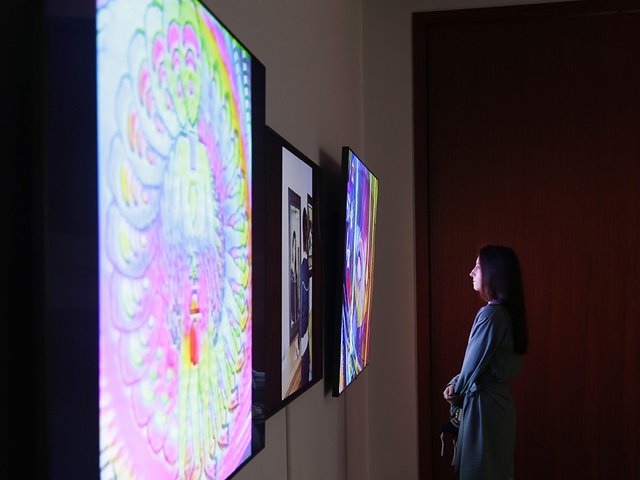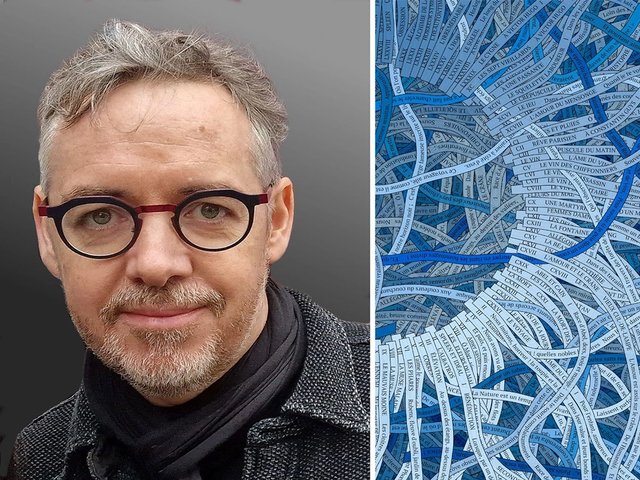The prolific Swiss-born, US-based, artist Urs Fischer—known for the extraordinary and unclassifiable range of his witty, often absurdist, paintings, drawings and sculpture, where he pairs and fuses dramatic juxtapositions (think of a horse merged with a full-sized bed; or an aluminium rendering of a rhinoceros bedecked with a vacuum cleaner and a range of household objects)—has drawn particular attention with his interactive works that represent entropy: natural decay, the gradual decline into disorder. Fischer is now bringing a process of entropy to his landmark digital sculpture series CHAOS #1–#500 (2022).
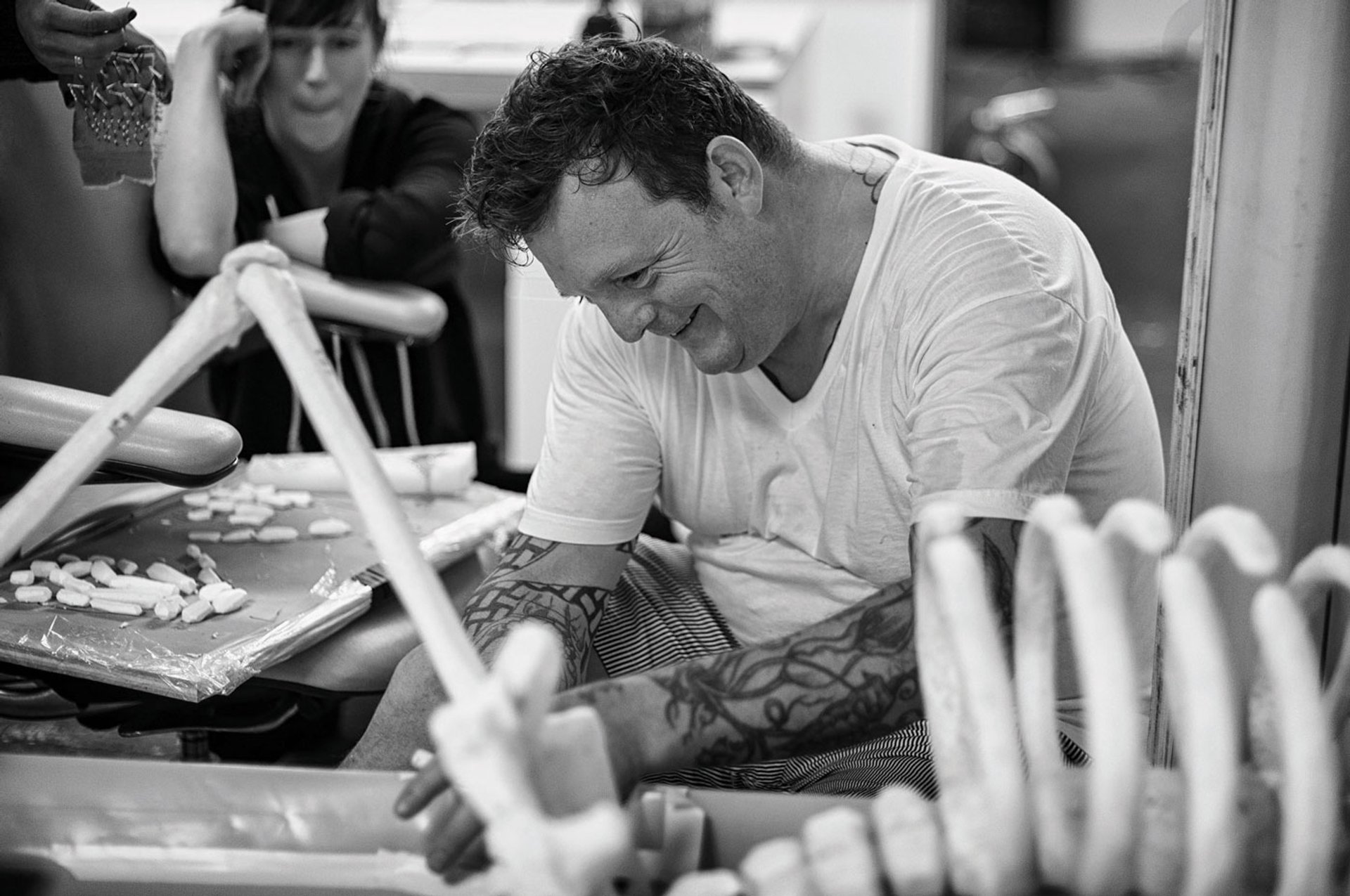
"We are opening a new dimension of creativity": Urs Fischer Photo: Robert Banat; Courtesy the artist and Gagosian
At Art Basel in 2017 Fischer’s Plasticine replica of Rodin’s The Kiss was a centre of attention at Sadie Coles HQ’s booth as visitors were invited to pull off pieces of Plasticine and to use them to make their own sculptures, pressed against the gallery’s walls. At the opening of the Pinault collection’s vast Cour de Commerce space in Paris in 2021 Fischer presented one of his most ambitious pairings of large paraffin wax candle sculptures—Untitled (2011), a full-scale replica of Giambologna’s The Rape of the Sabine Women paired with a lifesize sculpture of his friend and collaborator Rudolf Stingel—where he followed his process of lighting the candle wicks at the beginning of the exhibition and allowing them to melt and collapse as the candles burned.
And now, in collaboration with 1OF1—the collectors of top-flight digital art founded by the venture capitalist, collector and patron Ryan Zurrer—Fischer will be bringing the same concern with entropy to CHAOS #1–#500, a series sold in 2022 via NFTs (non-fungible tokens, programmable certificates of authenticity sitting on the blockchain) by connecting each of the 500 digital sculptures to its own NFT. In that series, Fischer created video sculptures which pair 3D renderings of everyday objects—a tropical fish and a computer keyboard; a wooden spoon an a clear ziplock bag; a vintage road map of Europe and a garden trowel—that beguilingly rotate, merge and demerge as each digital sculpture plays.
With the next stage of the project, CHAOS ENTROPY, owners of two or more of the original CHAOS NFTs can have them combined into a new NFT—courtesy of 1OF1 which, as its artistic director, Lukas Amacher, tells The Art Newspaper, will provide “a dedicated smart contract function, to merge [the original] tokens into one. The tokens the owners choose are destroyed. And one new token is created”. This new token will later be linked to a brand new video sculpture which Fischer, in response to the new NFT smart contract, will make by fusing two or more of the pairs of renderings from CHAOS #1–#500.
"We are opening a new dimension of creativity with CHAOS ENTROPY," Fischer says, "offering collectors the opportunity to be co-creators in this evolving project. This new phase embodies the participatory spirit of digital art."
“It’s going to be fun,” the artist tells The Art Newspaper. He foresees that the process will unleash some of the original works “to have a next life”. He has kept about 10% of the original NFTs himself, he says. “And I'm going to put in pretty much everything I have.”
Owners of the CHAOS tokens have a good example of how combined works might come together in the shape of CHAOS #501, a digital sculpture of multiple works from the series which was shown on a giant screen (just over 3m tall by 9m wide) at Gagosian in New York in 2022. It worked “like a painting on that huge bezel-free seamless screen,” Fischer remembers. “It was really overwhelming”. And, he says, “we can have smaller experiences of that, where we unlock these pairs [of renderings of household objects], which are interesting when they communicate, into a bigger thing. We can fuse them and see what happens.”
This is the first time, Amacher says, that 1OF1—which prefers to describe digital art as art of the digital age—has provided the technological backing to an artist they are supporting. Zurrer has spoken of 1OF1 being on a mission to help prominent digital artists take their place in the art canon. 1OF1 joined the RF.C Collection (headed by the digital art patron Pablo Rodriguez-Fraile and the designer Desiree Casoni) to acquire the media artist Refik Anadol’s AI artwork Machine Hallucinations for the Museum of Modern Art, New York (MoMA) in 2023. It also backed Anadol’s one-man exhibition Echoes of the Earth: Living Archive at Serpentine in London earlier this year; and a world tour of Beeple’s HUMAN ONE, the digital artist's first physical work, which Zurrer acquired in 2021 for $28.9 million (4700 ETH).
"As collectors ourselves," Amacher says, "we are not only intrigued by Urs’s artwork, but by his ability to deliver agency to his audience. With CHAOS ENTROPY, the relationship between collector and artist transcends a basic commercial transaction and becomes a collaboration. This community-oriented building process lies at the heart of crypto native values, which really excite us."
Amacher sees CHAOS ENTROPY as going back to Fischer's long-held practice of participatory sculpture. “If you think about his candles, the collector has a choice to burn the candles or to leave them as they are. And that choice comes at a cost,” Amacher says. “The interesting part [with CHAOS ENTROPY] is that you'll see a real world gamification scenario where collectors have to make the decision. Do they prefer 10 individual pairs or do they want 20 objects to revolve around each other and receive a different artwork? It is based on their choice ... which means there's more direct interaction between collector and artist.”
Playing with scale
Fischer plans, he says, to play with scale in the CHAOS ENTROPY stage, in contrast to CHAOS #1–#500, where the paired objects were in exact scale with each other. He might, for example, bring together a chair and a matchstick so that the scale of the smaller objects “gets way bigger and the bigger things get smaller”.
This playfulness is at one with the broad range of Fischer's artistic sympathies, and his work which scales up to monumental public sculptures, including his Giant Clay series. Appearing on The Art Newspaper's podcast A Brush With... in December 2023, Fischer listed works that he could not live without that were both monumental (Stonehenge and the Easter island figures) and ineffably Baroque (Gian Lorenzo Bernini's sculptures Apollo and Daphne, around 1622-25 and Sleeping Hermaphroditus, 1620).
As an artist, Fischer said in December, he is tuning in, waiting, not rushing. “Art is for nothing of purpose," he said. "It just is.”


